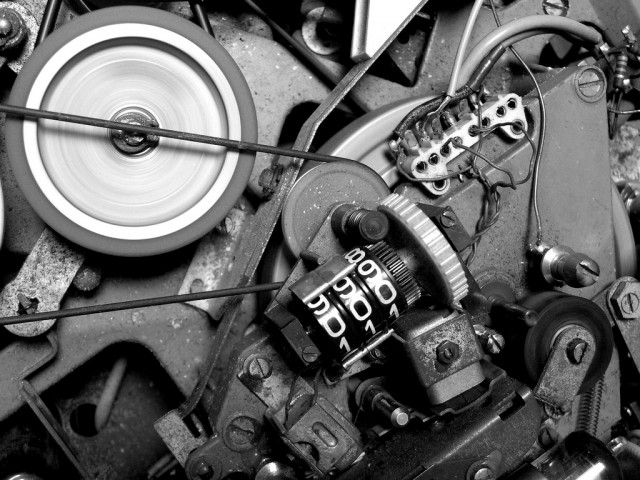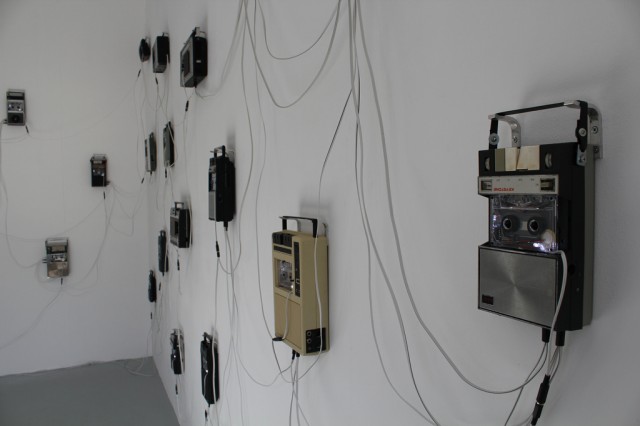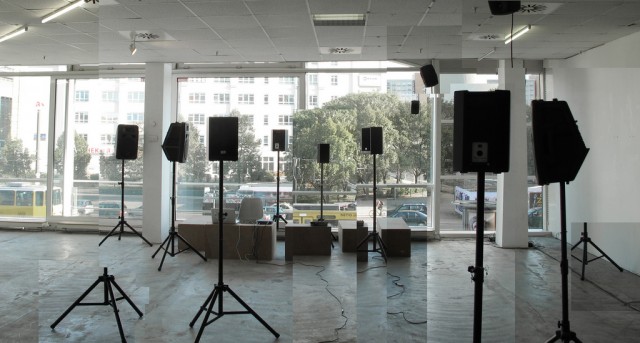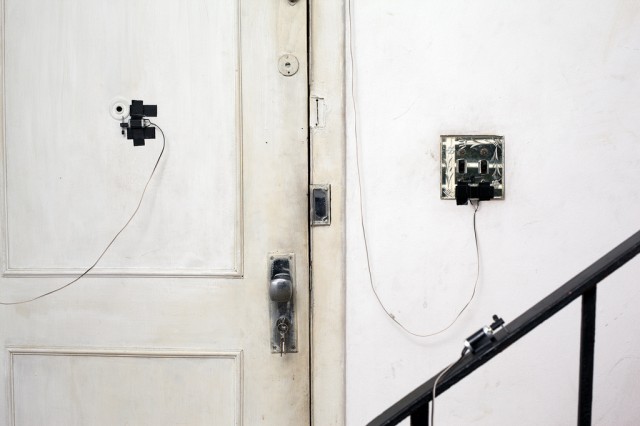In performance and art, sound and music constantly pull against the formless abstraction of the computer, to find physical expression and realization. In physical control, in tangible production, and in exploration of space, artists explore techniques new and old to refine the still-youthful medium of electronic and digital sound. That adventure is at the heart of a new series at a gallery space in the heart of Berlin, LEAP – the Lab for Electronic Arts and Performance, at Alexanderplatz.
I’m pleased to announce that CDM will be partnering with this new performance/exhibition series, entitled BodyControlled, as a media partner. In the shadow of Berlin’s Fernsehturm (TV tower), we’ll get the chance to share the work of an international roster of artists with everyone else, both in live streams and other documentation, as we look at some of the more experimental threads in electronic music today. (I like the symbolism there, at least, now broadcast over the Internets instead of via the air.) Berlin, like my previous home New York, is a convenient international crossroads, a place where you can find face-to-face some of the work from other parts of Germany, Europe, and beyond.
And I think we’re going to have a real blast kicking the series off this Saturday night, 8pm Berlin time November 26. The premiere of the series begins with installations and performances that manipulate spaces, real, virtual, and imagined. New works make noises with reel-to-reel tape, code, mechanical percussion, and more. I’ll be playing a live set with Pd, producing granular architectures from the harmonious sounds of piano and synth. And a highlight promises to be Robert Henke (of Monolake and Ableton fame, among other things), performing an epic 12-hour performance from just before midnight to morning the next day. (That leaves ample time for visitors to slip off to Berlin’s legendary club scene – or a nap – then see how things have evolved after dawn, if you so choose.)
Here, we take a first look at some of the artists, whose work can be sculptural, challenging, and adventurous. In the first preview videos, we see artists working with the mechanical qualities of tape and robotically-driven percussion to make sounds in physical space. A diverse program is slated for the coming months, too, so I can promise some diversity in ideas and aesthetic. The lineup:
Performances on the 26th November:
Stephen Cornford & Paul Whitty (UK)
Peter Kirn (US)
Robert Henke (DE)
Installations until 2nd December:
Stephen Cornford (UK)
Julian Oliver (NZ)
João Martinho Moura (PT)
Robert Mathy (AT)
Additionally, a recording of Robert Henke’s performance will be played as part of the installation
Let’s have a closer look at some of the upcoming work:
Stephen Cornford, in Binatone Galaxy, spotlights the strangely-beautiful sounds of the mechanisms of tape players, moving them from playback devices into the realm of being themselves instruments. Listen to the video above to hear what a chorus of recycled tape players sounds like, courtesy amplification.
Playing with Paul Whitty, Cornford also makes tape players into noise-making live instruments. One such performance below, though expect each of these to take on their own identity in Berlin this week.
At top, Robert Mathy’s work effectively becomes a “score” for a space, as percussion sets the environment into a choreographed set of sounds. (See also work like David Byrne’s Playing the Building project, which transformed an old ferry building in Manhattan. Here, Mathy works on a smaller scale.)
Volume consists of 24 electronic motors mounted on surfaces with different materiality, which are part of the exhibition room. Each motor is equipped with a small metal spike. When a motor gets activated, the spike knocks on the surface of the object on which the motor is mounted and produce a specific sound. All Motors are connected to a main control, which consists of an Arduino board and some electronic parts.
The score is composed of a series of varying random algorithms. They are diversified in temporal and spatial coordination, as every sound has his individual origin in space. The score is adapted in a new way for every room where the installation is shown.
João Martinho Moura‘s “Supercollider Shape,” above, is a minimal virtual sculpture of sound and imagined ink.
Robert Henke’s program notes:
The music of Robert Henke is preoccupied with the present: how something sounds in that moment and what color and substance convey a rhythmic phrase? Music as a state. Only later will this condition be formulated over time. The artist’s installations are always explicit and in turn relate to the phenomena of temporal change.
The work Microsphere, developed for LEAP, combines both fields and explores the boundaries between installation and live performance. Acoustic sounds from percussion instruments distributed throughout the room are recorded during the performance, slowed down repeatedly, atomized into tiny particles and distributed to many speakers. Over the course of twelve hours, more and more sounds are produced and the result is an ever-growing repertoire of spatial-tonal gestures. The composer withdraws from the machine and lets it develop and change itself constantly over long periods of time. The structure of the performance arises from many variable and instantaneous decisions during the performance. The possible outcomes may be small and delicate, almost inaudible and static, or loud, brutal and full of complex repetitions.
Watch the performances
From anywhere in the world:
Tune in 8p (20h) Saturday (CET) / UTC + 1. Performances at 9p, 10p, and then 11p – 11a. Livestream link:
http://www.livestream.com/leapberlin
In Berlin:
While we remain committed to covering this for the rest of the planet, for those handful of you in Berlin, of course, we’d love to see you in person.
Opening and Performances | 26th November 2011 – 20.00
Exhibition | 28th November 2011 – 2nd December 2011, 12h-18h
LEAP
Lab for Electronic Arts and Performance
(Berlin Carré 1. Stock)
Karl-Liebknecht-Str. 13
10178 Berlin
FREE entry
LEAP isn’t the easiest place to find. Here’s a video to guide you in the door (add the Benny Hill theme music if you feel it’s appropriate):
And, as I say so often … stay tuned.
Full program notes [English] [PDF]
http://www.leapknecht.de/



